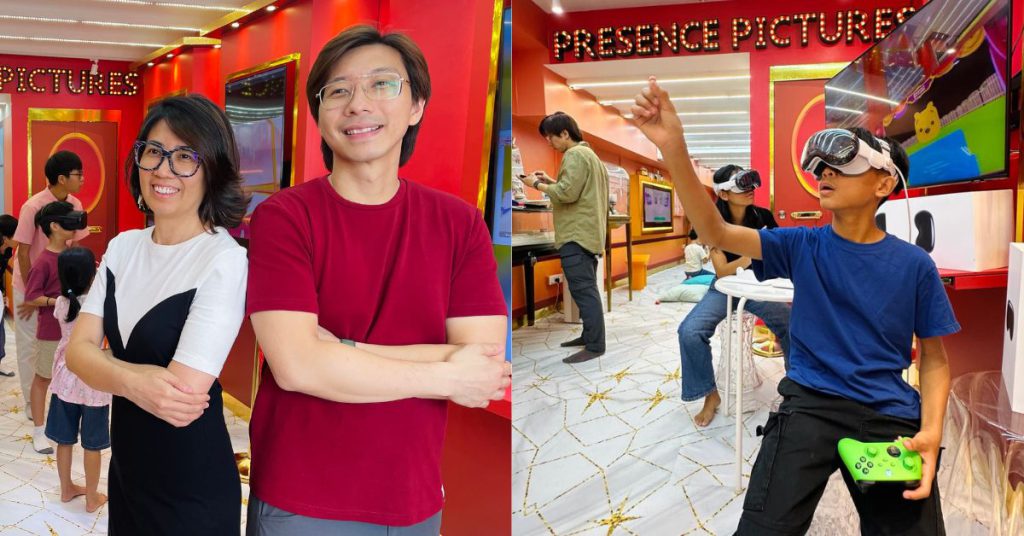Back in February, Apple Vision Pro’s release had caused quite the stir in the industry, with many hyping up its purported ability to “blend digital content with your physical space”.
One business in Singapore that’s already leveraging this device is Presence Pictures, a coding school that specialises in augmented (AR) and virtual reality (VR).
From corporates to children
Established in 2013 by Edmund Lee and Eunice Lam, Presence began with building immersive VR experiences for Fortune 500 companies.
“During these various VR corporate projects and roadshows we embarked on, one vivid outcome that struck Eunice and me was that kids were the most excited audience,” Edmund shared with Vulcan Post.

However, despite their excitement, kids were amongst the last to come to mind as users of VR creation tools. As such, there weren’t any software that could help young kids easily up VR experiences.
“The lack of such software meant that children were relegated to the role of (only) a consumer of VR games, which to me and Edmund was a shame,” Eunice pointed out.
Noticing this gap, they took on the challenge to build a VR creation software for kids.
In 2016, the duo rejected corporate projects and professional teaching positions to prototype the Presence coding software. They even taught VR to little kids as young as 4 years old, understanding their learning needs to improve their software.
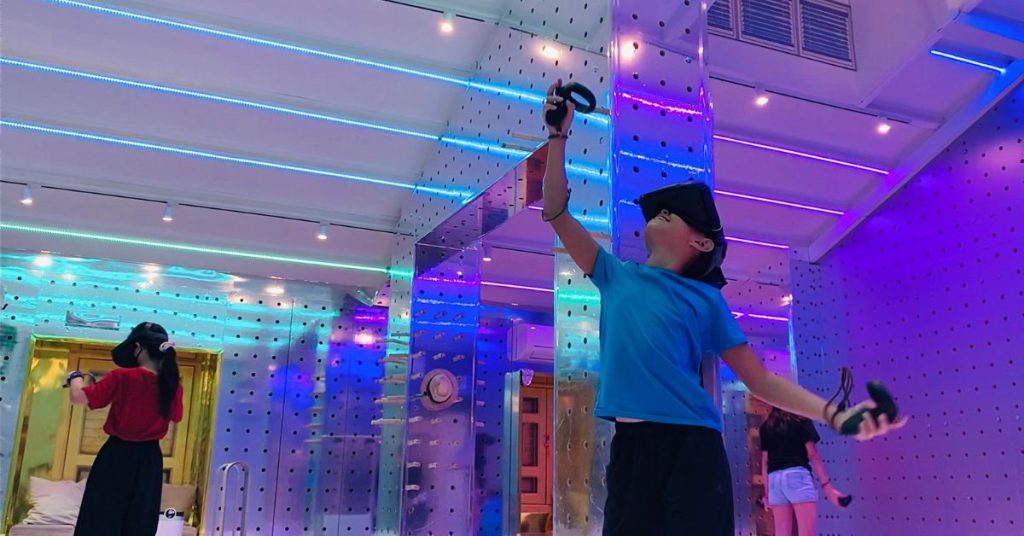
“What started off as a pipe dream is now a reality called Presence XR Coding,” they shared.
“Not only does Presence XR Coding simplify 3D design for little kids, our innovative software empowers our creators (AKA students) to code immersive virtual worlds that can be instantly output to extended reality (XR) modes like AR, VR, and mixed reality (MR) on iPhone and the Apple Vision Pro.”
Today, Presence Pictures has become a notable and innovative coding schools for children in Singapore, with a team of over 50 young creators, six mentors, and a user base of over 10,000 kids.
Jumping on the Apple bandwagon
Since the beginning of Presence Pictures, the founders have been teaching kids spatial thinking and how to code virtual worlds using their coding software. This can then be output to VR headsets such as Meta Quest, HTC VIVE, Google Cardboard, and now, the Apple Vision Pro.
But what’s so special about the Apple Vision Pro?

To this, Edmund shared that the Apple Vision Pro is a very advanced mixed-reality headset with impressive technology such as eye and hand-tracking capabilities with high quality displays and passthrough.
“The ability of Apple Pro Vision to blur the line between real and digital worlds is not just a tagline; it is a game-changer,” Edmund pointed out.
“Its mixed-reality operating system and 3D user interface enhance spatial mapping, thereby significantly improving not only the quality of AR display but also its immersive elements.”
With these features, Presence believes that the Apple Pro Vision can further enable students to familiarise themselves with the latest advancements in spatial computing, making coding education more dynamic and compelling.
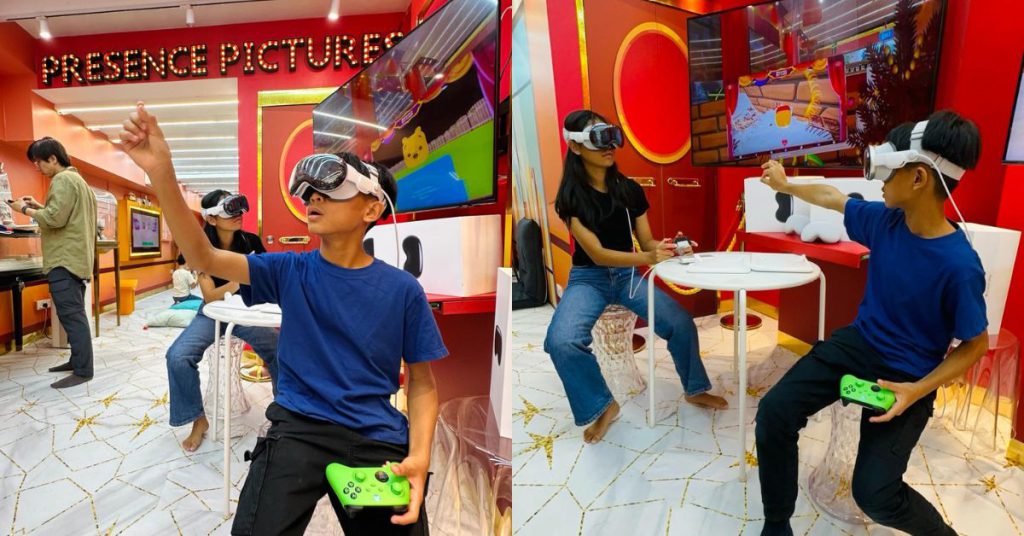
“Our R&D process has been an eye-opening journey,” Edmund said about the process of integrating the gadget to their curriculum. “We are very lucky to be able to work with Apple’s developer team in Singapore. They gave us private access at their labs to the Apple Vision Pro way before their official launch in the US.”
The founders believe that the head start allowed them to better understand the use cases of Vision Pro and how they can integrate it successfully and seamlessly with their coding software and curriculum.
But is it safe for children?
A common concern that parents may have, though, is whether or not VR and AR is even safe for kids.
After all, research has shown negative associations between screen time and the development of physical and cognitive abilities.
And what about AR/VR wearables’ impact on a child’s physical health? Is it OK for a kid’s eyes to be so close to a screen? Well, it’s actually been determined that sitting close to a screen, such as a TV, won’t permanently damage one’s eyes, but it can cause eye strain.
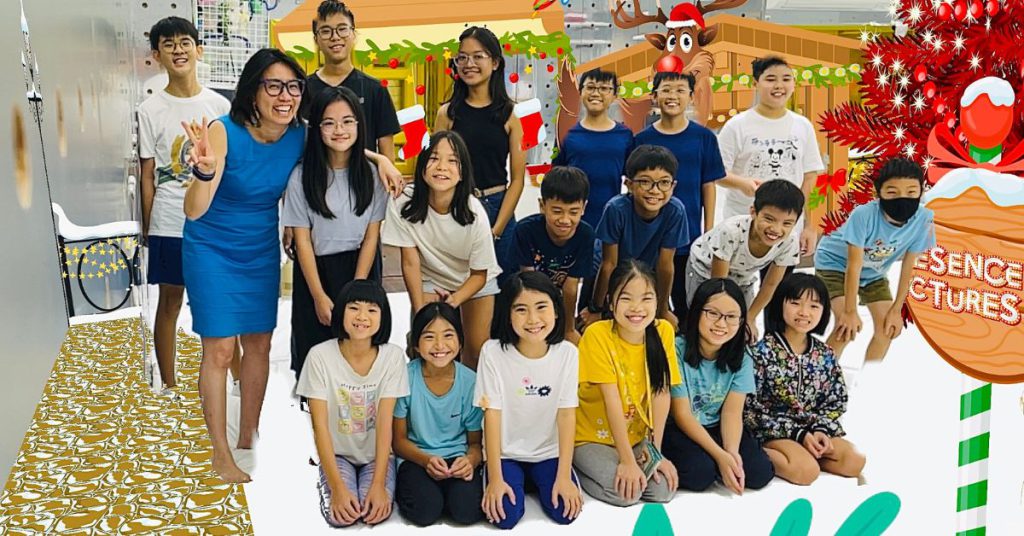
In a ZDNET article, Dr Nathan Cheung, a paediatric optometrist at Duke University, said that the most immediate risk of VR headset use to a child is neck strain, rather than eye strain.
Plus, according to Apple itself, the Apple Vision Pro is designed to fit and be used by individuals 13 years of age and older, thus should not be used by children under 13.
Regarding the critiques, Edmund said that at this point, they have not seen research that concludes that donning headsets would have negative impact on children, at least compared to iPads, smartphones, or other types of screens.
And Presence doesn’t believe that shying away from it will effectively help kids in the long run in this digital era.
Rather, it would be more practical to teach kids to act responsibly with technology and to choose useful content to view during their screen time.
“Our curriculum is specifically designed to incorporate a mix of hands-on, offline activities that require body movements and meaningful interactions with their peers while on screen with immersive experiences,” Eunice pointed out. “This minimises the risk of monotony and excessive screen dependence.”
All in moderation
In any case, the team believes that the benefits of learning VR/AR coding outweighs associated cons.
They believe immersive technologies can make learning a truly engaging and integrated experience, catering to diverse learning styles of different children, whether visual, auditory, or kinesthetic.
They also believe that the immersive nature of VR and AR makes children feel fully integrated into the learning environment, fostering active participation instead of passive observation.
Children can create their own 3D virtual worlds, games, and stories, boosting spatial thinking, creativity, and storytelling capabilities.
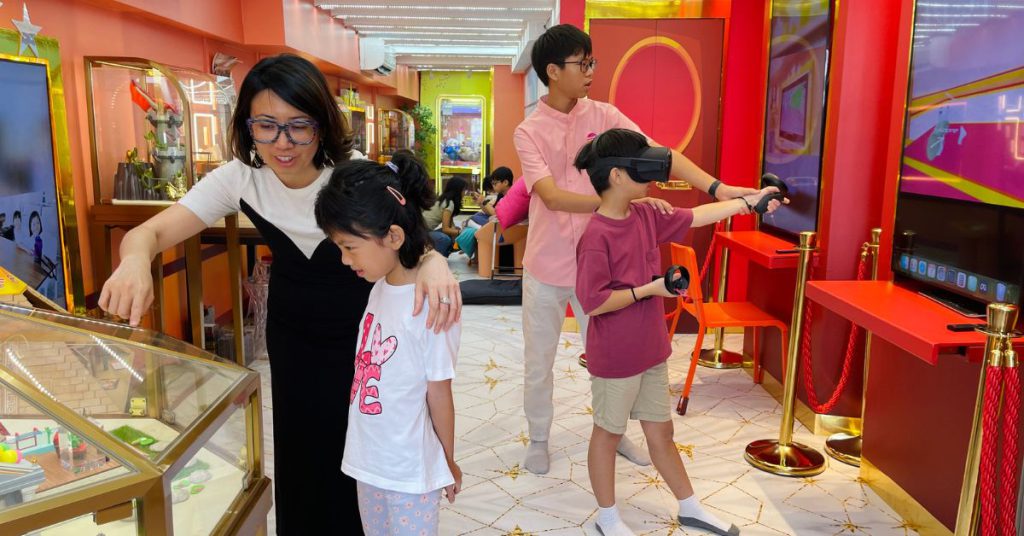
Eunice also shared that the school has seen a few entrepreneurial students, who are a part of their Start-Up Programme, turn their AR and VR games into sellable products using something called Presence Cards.
The truth is that the world is changing right in front of our eyes, and those who aren’t keeping up run the risk of being left behind.
Teaching children how to properly navigate and create AR/VR worlds of their own may serve to future-proof their education and open them up to more opportunities.
And Presence Pictures, which constantly updates its curriculum with the latest tech, is helping them do just that.
Featured Image Credit: Presence Pictures


